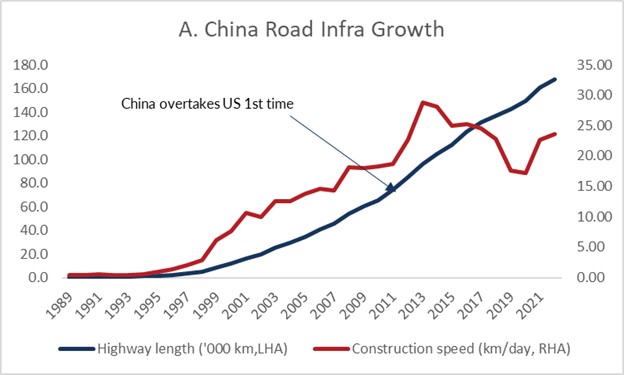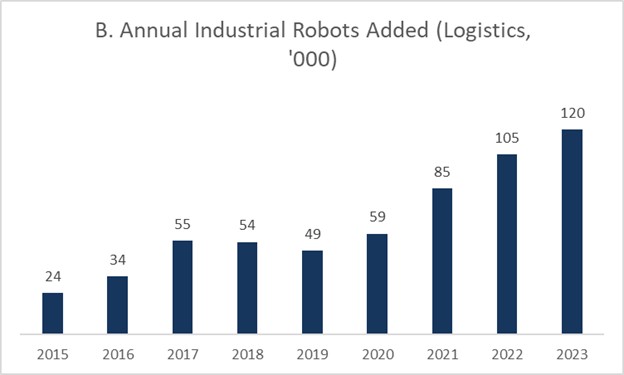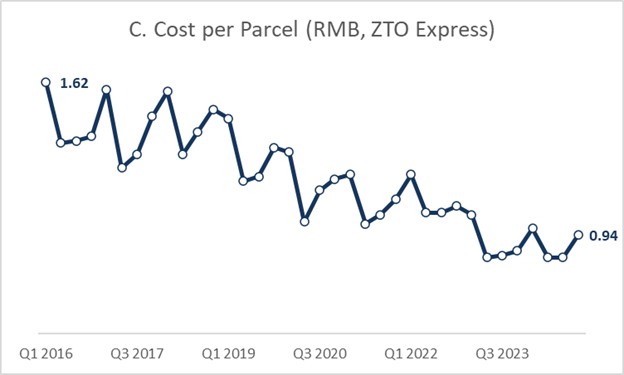Background: Why China’s Model Deserves a Closer Look
The idea for this analysis stemmed from two key conversations—one with a market leading client in the ecommerce sector, and another regarding the media discourse on Indian startups. There has been increasing discussion on whether India’s tech ecosystem is producing real, tangible economic impact akin to China’s transformation.
The aim of this article is to trace how a fundamental infrastructure and logistics revolution enabled entirely new e-commerce categories in China.
Infrastructure and Logistics: The Driving Forces Behind Value Commerce
China’s rapid e-commerce penetration was not solely a product of digital retail innovation. Two major sequential shifts in infrastructure played a pivotal role:
- Long-haul logistics cost reductions—driven by extensive highway expansion.
- Warehousing efficiencies—enabled by automation and robotics adoption.
Through discussions with entrepreneurs in China and a review of publicly available datasets, these assumptions were put to the test against historical trends.
Observations: Sequential Evolution of Online Commerce in China
Looking at Charts A & B, a clear pattern emerges:

Chart A: Phase I: 2003-13: Road Infra Exponentially Scales
Source: National Bureau of Statistics, China
- 2000-2013 was dominated by infrastructure expansion, with China surpassing the US in total highway length in 2011 and peaking in highway construction by 2013. This foundational build-out enabled the first wave of e-commerce 201, led by platforms like Alibaba and JD.com.
- Post-2013 saw an exponential increase in robotics adoption within warehousing and logistics, which grew 5x in incremental robot additions.

Chart B: Phase II (2013-2023): Road Infrastructure growth was followed by a rapid automation in transportation and logistics facilities
Source: Simon Hunt
Labor costs rose by 1.7x throughout the 2010s, prompting the adoption of more efficient Network Partner Models in logistics.
Mid-mile and last-mile automation significantly reduced costs for third-party logistics (3PL) providers, leading to a 42% decline in per-parcel costs.

Chart C: These changes have driven cost per parcel (CPP) for mid-mile players under 1 RMB. Small parcels are affordable now
Source: ZTO Express Investor Presentation, DART estimates
A critical inflection point: Costs falling below 1 RMB per parcel was essential for the emergence of “value commerce.” This low-cost logistics framework enabled the rise of ultra-efficient budget e-commerce models, particularly those focused on affordable mass-market retail.
By contrast, India’s per-parcel logistics costs remain nearly three times higher than China’s, creating barriers for replicating this model domestically.
Looking Ahead: How Does India Compare?
In our later articles, we will explore India’s positioning within this sequential development model, identifying necessary shifts to unlock the next phase of value commerce growth.
The China case study highlights the importance of reducing logistics inefficiencies, particularly through mid-mile automation and decentralized warehousing strategies. Whether India can bridge this gap will determine how effectively its consumer internet landscape evolves in the coming years.
Stay tuned for more insights on this topic.
